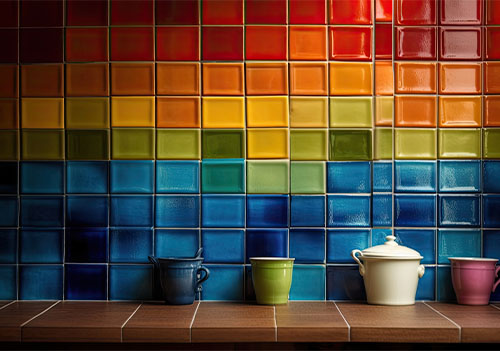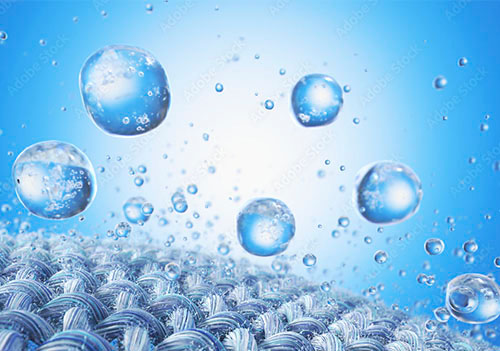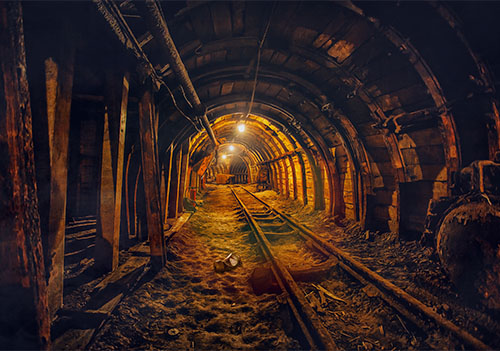DEFLOC®
Ceramic deflocculant additives
The treatment of clay by means of a wet grinding and deflocculation process is a widely used technique by the floor and wall tiles ceramic industry.
Following the development of single-firing processes, the need for atomised clay has led to the use of these processes. Additives are used to deflocculate the slips, before they are spray-dried.
The deflocculation process of clay consists in obtaining a slip or clay suspension in water with a high solid content, but at the same time with low viscosity, eliminating the typical plastic behaviour of clay. To achieve this objective, the physical-chemical aspect of the clay – water colloidal system is used, adding a deflocculant additive that modifies the electrical properties of the colloid, and therefore, its rheological behaviour.
IQE has been supporting this sector from its outset, producing and developing deflocculant additives for the ceramic industry based on its product line. They are currently marketed under the name of DEFLOC®. The most suitable products for each application are developed through our R&D department in close collaboration with our customers.
IQE produces different deflocculant additives in solid and liquid form, adapted for each type of use, bearing in mind the different process variables (water, types of clay, etc.). Our broad experience enables us to study the best conditions for each paste in our laboratories. The DEFLOC® deflocculant systems marketed by IQE are designed for use as a single additive, specific for different types of paste.
They are presented in two physical forms:
- SOLID (DEFLOC® S)
IQE manufactures sodium metasilicate pentahydrate, a commonly used product as a deflocculant. The deflocculating action of the sodium metasilicate can be multiplied if its effect is associated with the effect of chains of organic polymers, inorganic polymers or other specific additives.
This is the philosophy of the DEFLOC® S products, which, after being dispensed directly onto the slips or previously dissolved in water, act as a single additive in the deflocculation process. The formulation chosen must be adjusted, depending on the type of paste and its characteristics, as well as on the water used.
The use of DEFLOC® SH16 or DEFLOC®SP24 is recommended as basic products.
- LIQUID (DEFLOC®)
The DEFLOC® are liquid products that are easy to store and dispense. They are especially appropriate in continuous grinding processes. Their formulation, as in the solid systems, is based on the joint action of several products. All the other additives and their appropriate percentage are chosen, in agreement with the type of paste and process water, on a majority base of soluble silicate solutions.
The use of DEFLOC® 7525 is recommended as a basic product for pastes that are difficult to work with and DEFLOC® 105 for pastes that do not have too many deflocculation problems.
A customised study for each paste is recommended. The deflocculation studies and the choice of the most appropriate deflocculant system for each individual case are performed at IQE through laboratory tests, after obtaining deflocculation curves, studying different types of deflocculants and optimising the process and their consumption.
The composition of the pastes varies depending on the desired characteristics of the final piece to be obtained, but in all the cases, it consists in mixing one or several clays and different types of degreasing agents, such as quartz, feldspar, etc. This mixture must be blended and ground to very small sizes to favour is behaviour later on during firing.
When a deflocculant additive is added during the wet grinding, a slip or homogeneous suspension in water of small particles of each one of the components is obtained, with a high density of between 1.60 and 1.7 g/cc and low viscosity.
This enables it to be pumped and sprayed / dried without any difficulty and at a lower energy cost. The plastic behaviour of the clay-water blend is due to a “non-free” status of the flat clay particles linked together by surface electrostatic loads and H-OH links. The deflocculation mechanism is based on the breakage of this links so that the particles flow “freely”, sliding. The deflocculants have three activation mechanisms:
DEFLOCCULATION FIGURE OR DIAGRAM
- ELECTROSTATIC EFFECT: Dissociation in water producing Na+ cations that increase the pH and replace other “flocculant” cations in the crystalline structure of clay, such as Ca2+, Fe3+, Mg2+.
- STERIC EFFECT: Release of polyanions in solution that are electrostatically adsorbed, coating the clay laminates, and producing negatively charged particles that mutually repel each other, avoiding their “non-free” status or agglomeration.
- COMPLEXING EFFECT: Elimination of the effect of the “flocculant” cations in Ca, Mg solution, which consume deflocculant. They can act by chemical precipitation and/or sequestration effect. They can act by chemical precipitation and/or sequestration effect.
Products
DEFLOC® SH16
A solid deflocculant based on alkaline polysilicates and other polyanions. It is a white, crystalline, granular-looking solid. Most of its particles are in the 0.25 mm to 2.00 mm range. Given its high alkalinity, it is comes within the class of dangerous goods whose transport is regulated under ADR rules. Product specially designed for high-plasticity white bodies.
Markets it targets:
DEFLOC® SP24
Deflocculant solid based on alkaline polysilicates and alkaline organic polyanions. It is a white, crystalline solid with granular aspect. The majority of its particles fall within the range of 0.25 mm to 2.00 mm.
Product especially designed both for red and white pastes.
Due to its high alkalinity, it is classified as dangerous and its transport is regulated as ADR.
Markets it targets:
DEFLOC® L 105
A liquid deflocculant based on alkaline polysilicates and organic-inorganic polyanions with a mean density of 1.53 g/cm3 and a dry matter content of 43.5%. Being a liquid, this product is easy to store and dispense. It is specially designed for continuous body grinding processes without great deflocculation requirements.
Markets it targets:
DEFLOC® L 7525
A liquid deflocculant based on alkaline polysilicates and organic-inorganic polyanions with a mean density of 1.45 g/cm3 and a dry matter content of 36.5%. Being a liquid, this product is easy to store and dispense. It is specially designed for continuous grinding processes of difficult-to-treat bodies.
Markets it targets:
OTHERS DEFLOC®s
A personalised study is recommended in order to determine the best value-for-money deflocculant for each body. Industrias Químicas del Ebro S.A.’s Customer Technical Service is at your disposal to carry out deflocculation studies in order to select the most suitable deflocculant system for each individual case. Selection is made by studying different types of deflocculants through laboratory tests with deflocculation curves and optimising the process and its consumption.
Markets it targets:
SODIUM METASILICATE
A solid sodium silicate with molar ratio n=1.0. It is a white, crystalline solid of granular appearance. The majority of its particles fall within the range of 0.25 mm to 2.00 mm. Given its high alkalinity, it is comes within the class of dangerous goods whose transport is regulated under ADR rules. It is used mainly in sectors such as ceramics as a basic deflocculant. It is obtained by crystallization of a sodium silicate solution with n=1.0 molar ratio. The product manufactured by Industrias Químicas del Ebro SA. is sodium metasilicate with five moles of water: Na2O SiO2 5H2O.






